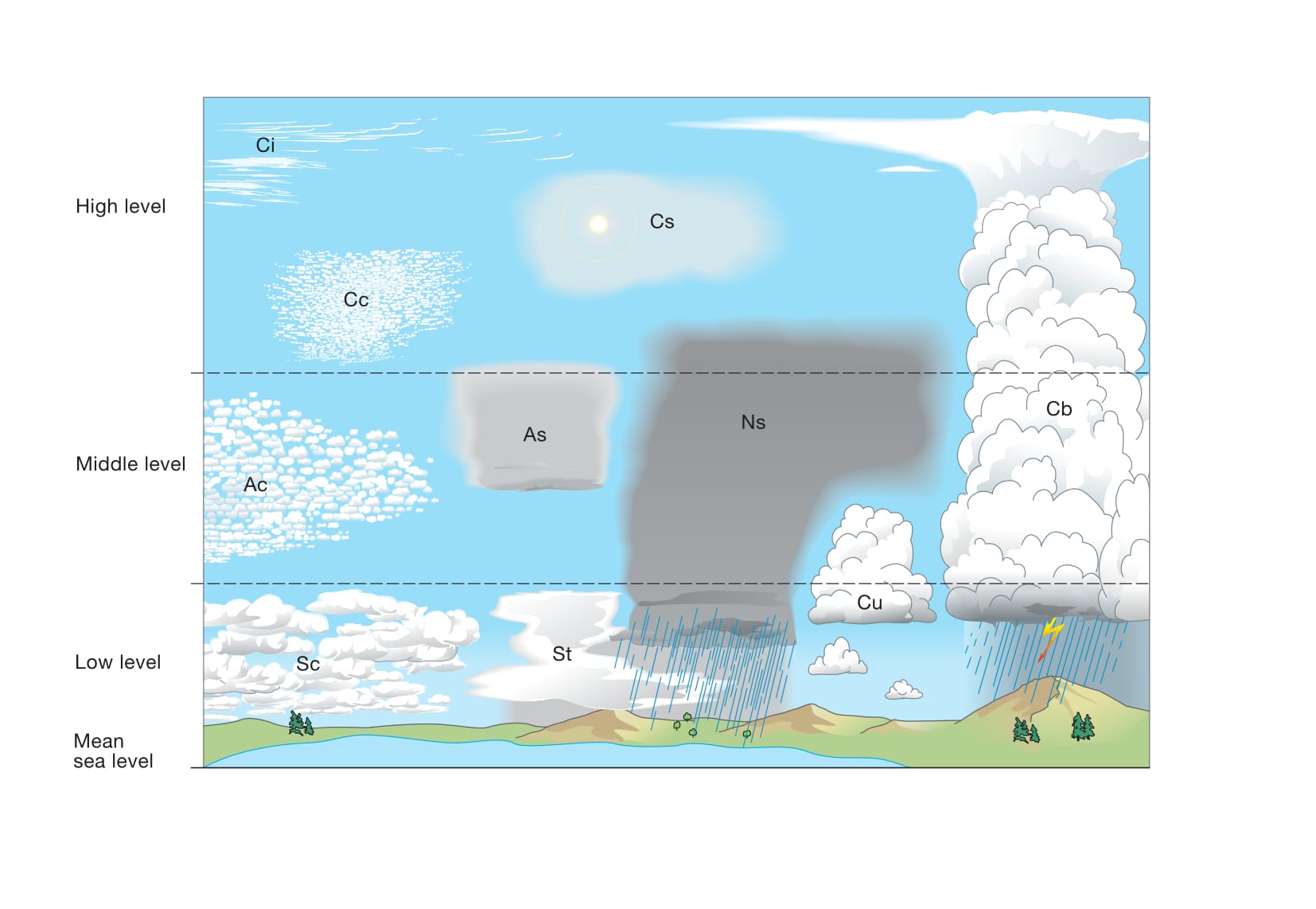Clouds and other Meteors
Clouds spotted in Guadalajara Jalisco, Mexico.
Contents: Atmospheric phenomena | Clouds classification
Atmospheric phenomena
According to World Meteorological Organization, “In meteorology, a phenomenon observed in the atmosphere or on the surface of the Earth is known as a meteor. It may be a form of precipitation, a suspension or a deposit of liquid or solid particles. It may also be a form of optical or electrical phenomena. Meteors are generally visible to human observers, but in the case of thunder, it is audible.
Sometimes, names of meteors are also applied to related concepts. For instance, the word ‘snow’ may refer to a type of hydrometeor (ensemble of falling particles), to snow cover (ensemble of particles lying on the ground) or to the substance snow (as in ‘snow blown from mountains’ or a snowball). The constituent particles of snow in these three cases are either snow crystals or snowflakes.
Also, certain meteors are named based on their constituent particles; for example, the hydrometeor ‘snow grains’ is an ensemble of falling snow grains.”
Type of clouds according latitude and altitude
Definition of a cloud (Section 2.1.1, International Cloud Atlas)
“A cloud is a hydrometeor consisting of minute particles of liquid water or ice, or of both, suspended in the atmosphere and usually not touching the ground. It may also include larger particles of liquid water or ice, as well as non-aqueous liquid or solid particles such as those present in fumes, smoke or dust.”

HIGH level clouds] > (Ci - Cirrus), (Cs - Cirrustratus), (Cc - Cirrucumulus); [MIDDLE level clouds] > (Ac - Altocumulus), (As - Altostratus), (Ns - Nimbostratus); [LOW level] > (Sc - Stratocumulus), (St - Stratus), (Cu - Cumulus); [Multilevel clouds] > (Cumulonimbus).